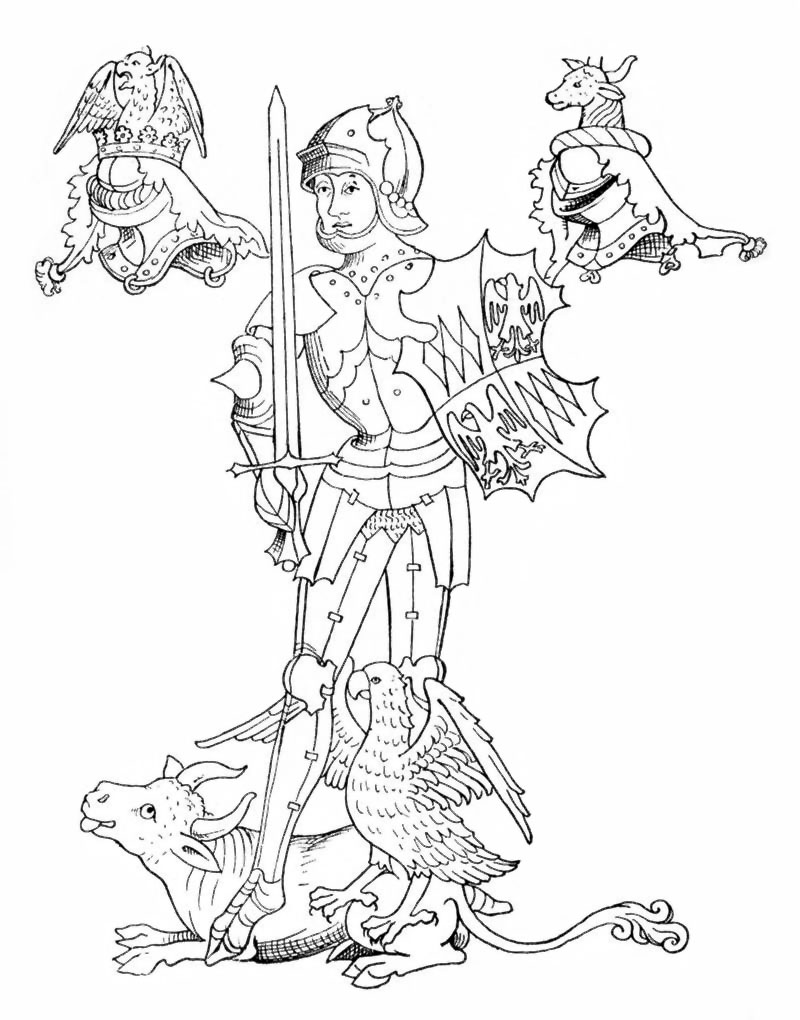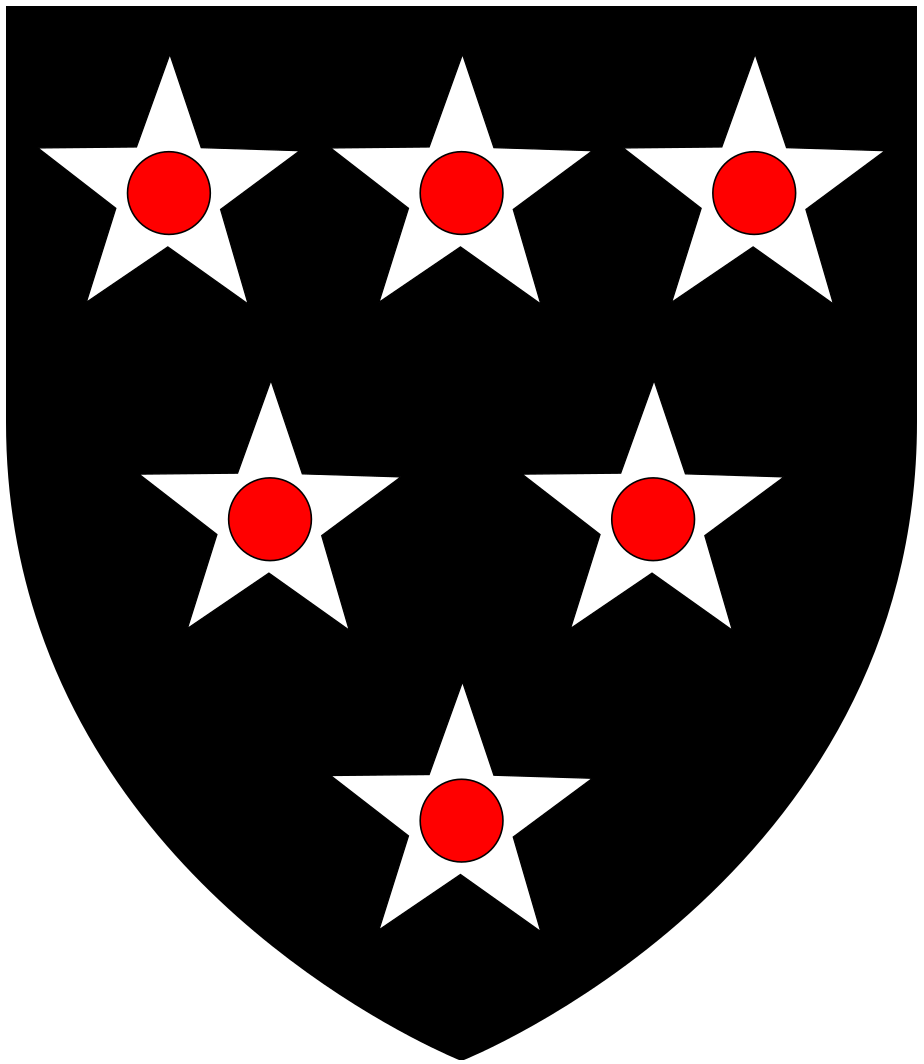|
Katherine Neville, Baroness Hastings
Katherine Neville, Baroness Hastings (1442 – between January and 25 March 1504), was a noblewoman and a member of the powerful Neville family of northern England. She was one of the six daughters of Richard Neville, 5th Earl of Salisbury, and the sister of military commander Richard Neville, 16th Earl of Warwick, known to history as ''Warwick the Kingmaker''. She was married twice. By her first husband William Bonville, 6th Baron Harington of Aldingham, she was the mother of Cecily Bonville, who became the wealthiest heiress in England following the deaths in the Battle of Wakefield of Katherine's husband, her father-in-law; and less than two months later, of William Bonville's grandfather, William Bonville, 1st Baron Bonville who was executed following the Yorkist defeat at the Second Battle of St Albans. Katherine's second husband was William Hastings, 1st Baron Hastings, a powerful noble who was beheaded in 1483 on the order of King Richard III, who placed Katherine directly ... [...More Info...] [...Related Items...] OR: [Wikipedia] [Google] [Baidu] |
William Bonville, 6th Baron Harington
William Bonville, 6th Baron Harington (1442 – 30 December 1460) was an English nobleman who was a loyal adherent of the House of York during the dynastic conflict in England in the 15th century now known as the Wars of the Roses. He was slain and left dead on the field during the Yorkist defeat at the Battle of Wakefield, leaving his baby daughter, Cecily Bonville heiress to his barony. Family William was born in Chewton Mendip, Somerset, England to William Bonville and Elizabeth Harington. His paternal grandparents were William Bonville, 1st Baron Bonville and Margaret Grey. His maternal grandparents were William Harington, 5th Baron Harington of Aldingham (c. 1394 - 1458) and Margaret Hill daughter of Sir John Hill, Justice of the King's Bench. In 1458, he succeeded his grandfather as the 6th Baron Harington of Aldingham by right of his mother, who had died in her father's lifetime. Marriage and death The same year in which he gained his title, William married Lad ... [...More Info...] [...Related Items...] OR: [Wikipedia] [Google] [Baidu] |
Wars Of The Roses
The Wars of the Roses (1455–1487), known at the time and for more than a century after as the Civil Wars, were a series of civil wars fought over control of the English throne in the mid-to-late fifteenth century. These wars were fought between supporters of two rival cadet branches of the royal House of Plantagenet: Lancaster and York. The wars extinguished the male lines of the two branches, leading to the Tudor family inheriting the Lancastrian claim to the throne. Following the war, the Houses of Lancaster and York were united, creating a new royal dynasty and thereby resolving their rival claims. For over thirty years, there were greater and lesser levels of violent conflict between various rival contenders for control of the English monarchy. The War of the Roses had its roots in the wake of the Hundred Years' War. After fighting a series of armed conflicts with France, the English monarchy's prestige was weakened by emergent socio-economic troubles. This weaken ... [...More Info...] [...Related Items...] OR: [Wikipedia] [Google] [Baidu] |
House Of York
The House of York was a cadet branch of the English royal House of Plantagenet. Three of its members became kings of England in the late 15th century. The House of York descended in the male line from Edmund of Langley, 1st Duke of York, the fourth surviving son of Edward III. In time, it also represented Edward III's senior line, when an heir of York married the heiress-descendant of Lionel, Duke of Clarence, Edward III's second surviving son. It is based on these descents that they claimed the English crown. Compared with its rival, the House of Lancaster, it had a superior claim to the throne of England according to cognatic primogeniture, but an inferior claim according to agnatic primogeniture. The reign of this dynasty ended with the death of Richard III of England at the Battle of Bosworth Field in 1485. It became extinct in the male line with the death of Edward Plantagenet, 17th Earl of Warwick, in 1499. Descent from Edward III Edmund of Langley, 1st Duk ... [...More Info...] [...Related Items...] OR: [Wikipedia] [Google] [Baidu] |
Anne Hastings Portrait
Anne, alternatively spelled Ann, is a form of the Latin female given name Anna. This in turn is a representation of the Hebrew Hannah, which means 'favour' or 'grace'. Related names include Annie. Anne is sometimes used as a male name in the Netherlands, particularly in the Frisian speaking part (for example, author Anne de Vries). In this incarnation, it is related to Germanic arn-names and means 'eagle'.See entry on "Anne" in th''Behind the Name'' databaseand th"Anne"an"Ane"entries (in Dutch) in the Nederlandse Voornamenbank (Dutch First Names Database) of the Meertens Instituut (23 October 2018). It has also been used for males in France (Anne de Montmorency) and Scotland (Lord Anne Hamilton). Anne is a common name and the following lists represent a small selection. For a comprehensive list, see instead: . As a feminine name Anne * Saint Anne, Mother of the Virgin Mary * Anne, Queen of Great Britain (1665–1714), Queen of England, Scotland, and Ireland (1702–07) and ... [...More Info...] [...Related Items...] OR: [Wikipedia] [Google] [Baidu] |
Edward III Of England
Edward III (13 November 1312 – 21 June 1377), also known as Edward of Windsor before his accession, was King of England and Lord of Ireland from January 1327 until his death in 1377. He is noted for his military success and for restoring royal authority after the disastrous and unorthodox reign of his father, Edward II. EdwardIII transformed the Kingdom of England into one of the most formidable military powers in Europe. His fifty-year reign was one of the longest in English history, and saw vital developments in legislation and government, in particular the evolution of the English Parliament, as well as the ravages of the Black Death. He outlived his eldest son, Edward the Black Prince, and the throne passed to his grandson, Richard II. Edward was crowned at age fourteen after his father was deposed by his mother, Isabella of France, and her lover Roger Mortimer. At age seventeen he led a successful coup d'état against Mortimer, the ''de facto'' ruler of the coun ... [...More Info...] [...Related Items...] OR: [Wikipedia] [Google] [Baidu] |
Katherine Swynford
Katherine Swynford, Duchess of Lancaster (born Katherine de Roet, – 10 May 1403), also spelled Katharine or Catherine, was the third wife of John of Gaunt, Duke of Lancaster, the fourth (but third surviving) son of King Edward III. Daughter of a knight from Hainaut, Katherine was brought up at the English royal court, later found herself in the service of Blanche of Lancaster, the first wife of John of Gaunt. At that time, she was married to Hugh Swynford (or de Swynford), one of the Duke's knights. After the death of the Duchess, Katherine became the lady-in-waiting of her daughters, and also took care of them. After the death of Hugh Swynford (or de Swynford), she became a member of the household of the Duke's new wife, Constance of Castile, and she was given management of the estates of her deceased husband in Lincolnshire: Coleby and Kettlethorpe. She soon became the mistress of John of Gaunt. From this connection, at least four children were born, who received the fami ... [...More Info...] [...Related Items...] OR: [Wikipedia] [Google] [Baidu] |
John Of Gaunt
John of Gaunt, Duke of Lancaster (6 March 1340 – 3 February 1399) was an English royal prince, military leader, and statesman. He was the fourth son (third to survive infancy as William of Hatfield died shortly after birth) of King Edward III of England, and the father of King Henry IV. Due to Gaunt's royal origin, advantageous marriages, and some generous land grants, he was one of the richest men of his era, and was an influential figure during the reigns of both his father and his nephew, Richard II. As Duke of Lancaster, he is the founder of the royal House of Lancaster, whose members would ascend the throne after his death. His birthplace, Ghent in Flanders, then known in English as ''Gaunt'', was the origin of his name. When he became unpopular later in life, a scurrilous rumour circulated, along with lampoons, claiming that he was actually the son of a Ghent butcher. This rumour, which infuriated him, may have been inspired by the fact that Edward III had not been ... [...More Info...] [...Related Items...] OR: [Wikipedia] [Google] [Baidu] |
Joan Beaufort, Countess Of Westmoreland
Joan may refer to: People and fictional characters *Joan (given name), including a list of women, men and fictional characters *:Joan of Arc, a French military heroine *Joan (surname) Weather events *Tropical Storm Joan (other), multiple tropical cyclones are named Joan Music * ''Joan'' (album), a 1967 album by Joan Baez *"Joan", a song by The Art Bears from their 1978 album ''Hopes and Fears'' *"Joan", a song by Lene Lovich from her 1980 album ''Flex'' *"Joan", a song by Erasure from their 1991 album ''Chorus'' *"Joan", a song by The Innocence Mission from their 1991 album ''Umbrella'' *"Joan", a song by God Is My Co-Pilot from their 1992 album ''I Am Not This Body'' Other uses *Jōan (era), a Japanese era name * ''Joan'' (play), 2015 one-woman play written by Lucy J. Skillbeck *Joan Township, Ontario, a geographic township See also *''Jo-an'' tea house, National Treasure in Inuyama, Aichi Prefecture, Japan * *Jane (other) *Jean (other) *Jeanne (di ... [...More Info...] [...Related Items...] OR: [Wikipedia] [Google] [Baidu] |


